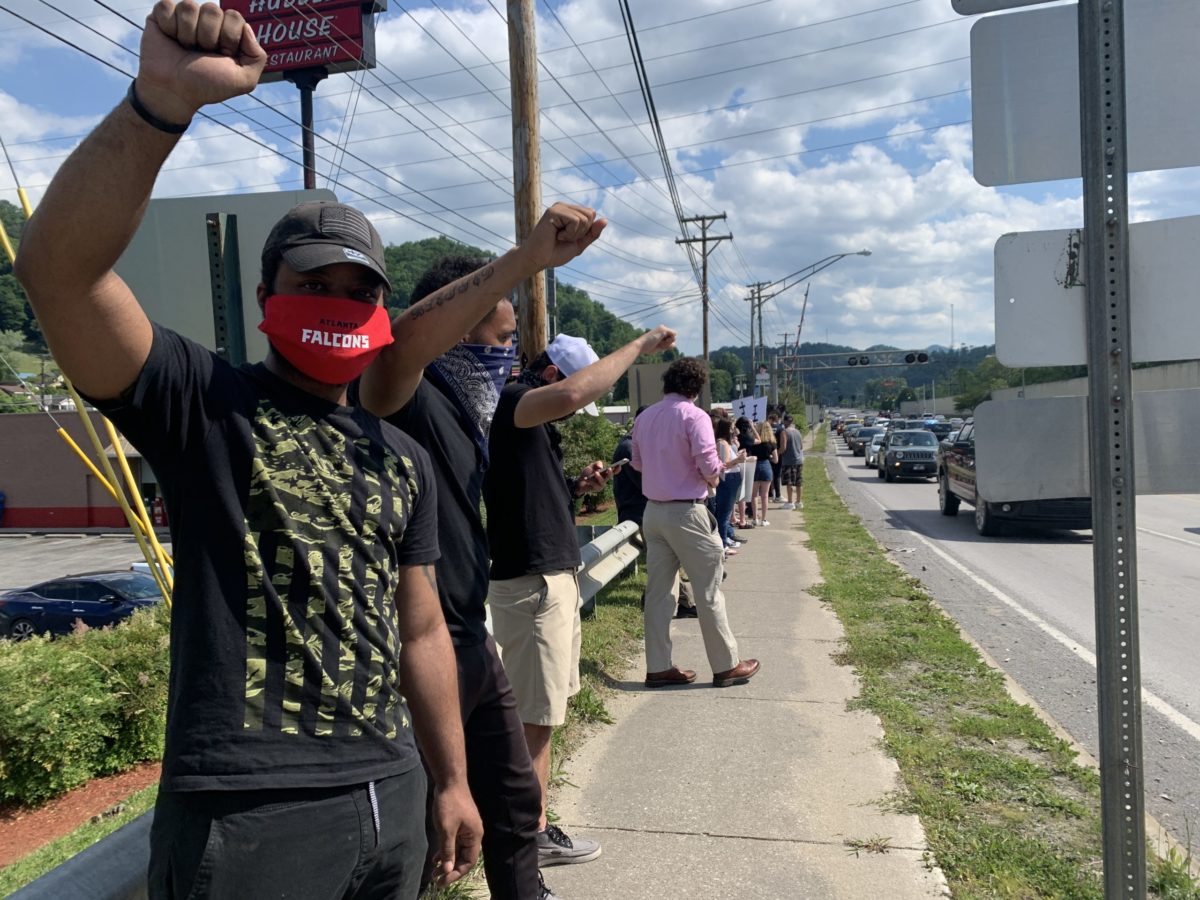This piece was originally published in Scalawag Magazine in May 2020. Scalawag amplifies the voices of activists, artists and writers reckoning with the South. You can read the original article here.
On the inside, at Raleigh’s Central Prison (CP), at first we joked about zombies and the apocalypse as cruise ships contaminated with the coronavirus found reluctant harbors. Then, as the virus spread through Washington and New York, daily White House briefings displaced talk of Democratic primaries, and news broadcasts grew ominous, a corrections officer made an announcement on every cell block:
“Gentlemen, listen up. Effective immediately, all personal visits and volunteer-based programs are suspended for the next 30 days. Legal and clergy visits will continue. These restrictions will be assessed after that 30 day period.“
He left a thick stack of stapled papers on the table, a surprising amount of information for a bulletin board usually littered with one paragraph memos. There were memos to prisoners, wardens and staff, screening procedures for entering the prison, and a COVID-19 Daily Briefing with a list of active coronavirus investigations in the state prison. But these safety measures, which also include mandatory cloth masks for prisoners, increased access to cleaning supplies, social distancing requirements and disinfectant fans, reassured no one. Before the pandemic, prisons were already overcrowded—staff undermanned, overworked, underpaid and undertrained—and prison healthcare was spotty. COVID-19 exploits each of these weaknesses. And North Carolina faces an additional hurdle of its own making—the abolition of parole, implemented in the Structured Sentencing Act of 1994. Without parole, many prisons have few means to reduce prison populations, thereby increasing the risk of infection with COVID-19.
Unhealthy Conditions
To be clear, even if we still had parole in North Carolina, there is no assurance of safety in this pandemic. Vivid CDC handwashing signs appeared on random walls throughout CP, right beside older posters warning against the spread of staph infection, hepatitis and influenza. New handwashing signs instructing to “wet, soap, scrub, rinse, dry: repeat” are undermined by actual practices. Though the commissioner of prisons assured the public we would be issued two bars of soap each week, claiming that this is a safety measure is laughable—most state prisoners have received two bars of soap every week for decades, and it hasn’t prevented the spread of anything.
Unsanitary conditions in prison are common. Every area is a “high traffic area” due to overcrowding, and chow halls and kitchens—where flies circle during the day and rats feed at night—are the worst. COVID-19 could find welcome on every filthy surface and be tracked throughout the prison even if it is locked down. Sanitation and virus prevention have never been security concerns any more than the health and well-being of people in prison.
The Division of Prisons and CDC guidelines for preventing the spread of COVID-19 also say to “avoid contact with people” and to “stay home if you are sick,” but minimum and medium custody facilities account for most of North Carolina’s prisons. Living spaces are open dormitories of 50 or more people sharing toilets, sinks and showers. Each bunk is 3 to 4 feet to the left, right, above and below another bunk.
Even on death row, where a block contains only 24 single cells, viruses spread quickly. A month before COVID-19 struck the US, a vicious strain of influenza swept through CP. Despite annual flu shots, and masks issued to any prisoner who asked, many people became sick. Prisoners who reported symptoms were tested for the flu and, if positive, quarantined via solitary confinement—no TV, radio, phone, personal property or showers. During the flu outbreak, seven death row prisoners were quarantined on the mental health unit because the hospital had no room for them. Nurses routinely ignored calls for help and questions about medication, inconsistently checked on patients and generally acted indifferent toward their welfare.
According to several staff, CP’s hospital has no ventilators and only a handful of respirators. Ventilators are already in short supply in the free world. With the additional layer of apathetic prison hospital staff with the power to decide whether a patient goes to an outside hospital, prisoners with COVID-19 may die in confinement. Given the choice between degrading and inadequate medical care in the hole, or suffering in silence, many prisoners will choose the latter, and coronavirus will spread.
Elderly prisoners represent one of the fastest-growing segment of people in prison, largely due to excessive long-term in life sentences enforced in the 1990s. According to research of the Department of Public Safety’s Research and Planning Automated System Query, among the approximately 35,000 people incarcerated in North Carolina, more than 8,000 are over the age of 50. Prisoners are classified as “elderly” by the age of 50 both because of pre-existing health problems and those that develop while incarcerated. COVID-19 is especially dangerous for people with asthma, autoimmune disorders, diabetes, heart disease and hypertension. Such men and women compose a substantial portion of the prison population.
Aggravated Spread
In late March at Neuse Correctional in Goldsboro, two prisoners reported symptoms of a virus, were quarantined and tested for COVID-19. When the results came back positive, prison officials ordered a facility lockdown—restricting movement and confining prisoners to the dorms. Fearing contagion, over 200 prisoners staged a protest. It took local law enforcement to help restore “order.” Three weeks later, over 460 of Neuse Correctional’s 770 prisoners tested positive for coronavirus, one of the largest prison outbreaks in the nation, and the only state prison to have all of its inhabitants tested. Most were asymptomatic, but still contagious.
Despite promises to halt all county jail and inter-prison transfers, state prison officials shipped the 36 “ringleaders” of the Neuse protest nearly 150 miles East to Pasquotank Correctional, a maximum-security prison near Elizabeth City. The wife of one correctional officer at Pasquotank, which now has several positive COVID-19 cases amongst the newly arrived Neuse prisoners, asked, “Why bring inmates that were exposed to [coronavirus] to a prison that didn’t have any?”
Similarly, six people at Johnston Correctional near Smithfield tested positive for COVID-19 in mid-April. Though three prisoners were quarantined, and three staff sent home, no one else was tested. State prison officials claim they do not have the budget to test every prisoner. Those staff receive testing upon request, only symptomatic prisoners are tested. A week after the positive COVID-19 cases at Johnston Correctional, prison officials closed the facility, sent its employees to help out at Neuse, and transferred 600 prisoners to two western North Carolina prisons.
By late April, nine of North Carolina’s 55 prisons had confirmed coronavirus cases, including CP, the Correctional Institute for Women in Raleigh and Butner Federal Correctional Institution (FCI).
Around the same time as the Neuse outbreak, FCI had already reported 76 cases of COVID-19. Fearing for his life, Richard Cephas escaped from a minimum-security building. The 54-year-old, who was incarcerated for a non-violent drug offense, had about 18 months left on a five and a half year sentence, but has neutropenia, an autoimmune disease. Cephas applied for the Federal Bureau of Prisons home confinement program, which has released a little over 1,000 of the 175,000 federal prisoners, but was denied. After turning himself in, Cephas now faces an additional five years for his escape, and has returned to Butner FCI, where five prisoners have died from COVID-19. All but one had an underlying health condition.
Ignoring the obvious
There are too many people in prison, evidenced by the insufficient space, correctional staff, medical resources and funding for programs. In acknowledgment of prison overcrowding and the danger it represents, especially during the coronavirus pandemic, public health experts at Duke University and the University of North Carolina at Chapel Hill are pushing for an immediate reduction in North Carolina’s incarcerated population. Dr. Gavin Yamey, director of the Center for Policy Impact in Global Health at Duke, wrote and asked Governor Roy Cooper to commute sentences for elderly medically vulnerable prisoners, or those who have less than a year remaining on their sentences.
“We have an ongoing campaign with statewide administrations through multiple channels to try to make the case that jails, prisons, ICE detention centers [and] juvenile correctional facilities are all tinderboxes when it comes to COVID-19.”
Likewise, in a letter to Durham County District Attorney Satana Deberry, Durham Congregations, Associations and Neighborhoods (Durham CAN) asked Deberry to consider sentencing relief for some 800 prisoners whose cases originated in Durham County.
“Criteria could include, but not be limited to, individuals who are 65 or older, individuals who have served 3/4 of their sentence or individual serving sentences for low level felonies or probation/post-release supervision violations.“
In mid-April, a coalition of civil rights groups filed a lawsuit asking the state Supreme Court to immediately release vulnerable prisoners. They argue that Governor Cooper and the Department of Public Safety (DPS) “have a legal duty to take action before large-scale outbreak results and deaths inside the prisons in and surrounding communities.”
Responding to the demand for release of more prisoners, the DPS allowed only 500 men and women with 2020 release dates to serve the remainder of their sentences at home under community supervision. The effort to minimize public and legislative backlash by releasing only pregnant women and select elderly prisoners is a disingenuous and potentially deadly game: between January and April of this year alone, 6,900 incarcerated people earned release by completing their sentences.
The DPS could do more to reduce overcrowding in state prisons, thereby reducing the risk of coronavirus spread and strain on penal resources. However, resistance to such common sense safety measures remains strong. It comes from the same quarters that created and supported the Structured Sentencing Act without any long-range vision for how it would overburden state prisons. It abolished parole without any data that shows early release is contrary to public safety, or longer prison terms improves it.
The threat to public safety has always been indifference towards the incarcerated.
People in prison do not lose all of their rights, and are constitutionally entitled to a certain level of dignified care. When the penal system is no longer capable of maintaining its responsibilities because there are too many people in prison, it is time to reinstate parole for all of the incarcerated. That time has arrived.
While on death row, Lyle May earned an associates of arts degree from Ohio University. He is currently enrolled in a bachelor’s program in criminal justice administration. Lyle has written for The Marshall Project, The J Journal, Prison Writers, and maintains a blog at BeyondSteelDoors.com. You can also find his memoir, Waiting For The Last Train on Amazon.



